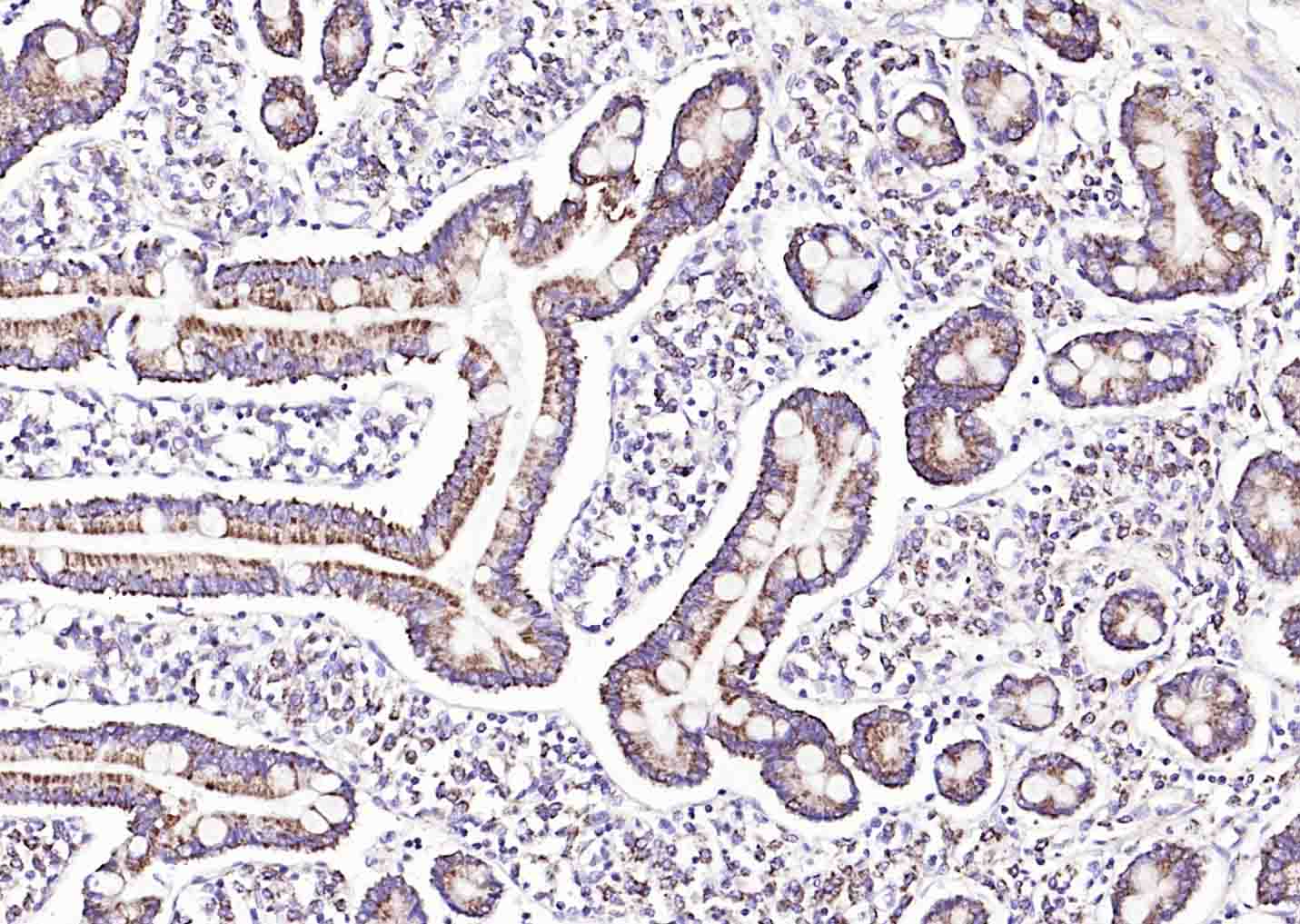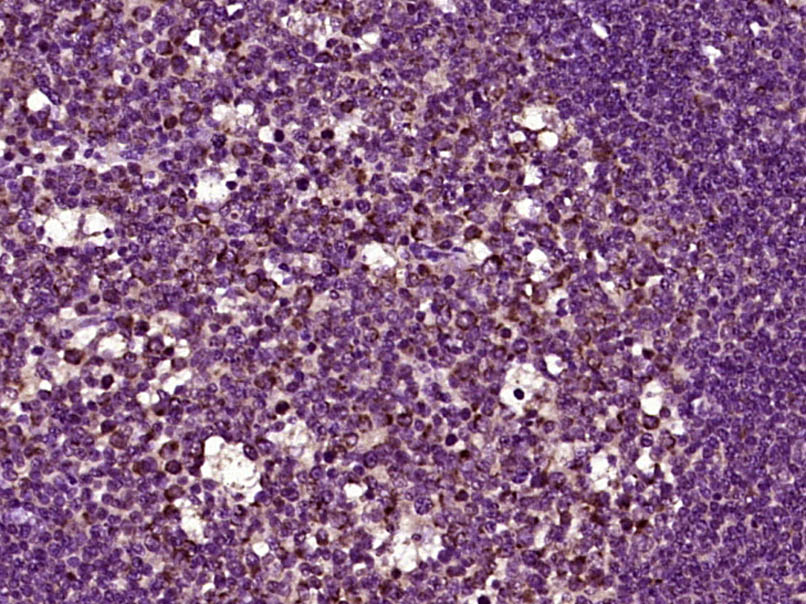
Rabbit Anti-GPBAR1 antibody
GPCR TGR5; BG 37; BG37; G protein coupled bile acid receptor 1; G protein coupled bile acid receptor BG 37; G protein coupled bile acid receptor BG37; G-protein coupled bile acid receptor 1; G-protein coupled receptor GPCR19; GPBAR 1; GPBAR_HUMAN; GPCR 19
View History [Clear]
Details
Product Name GPBAR1 Chinese Name G蛋白偶联胆汁酸受体1抗体 Alias GPCR TGR5; BG 37; BG37; G protein coupled bile acid receptor 1; G protein coupled bile acid receptor BG 37; G protein coupled bile acid receptor BG37; G-protein coupled bile acid receptor 1; G-protein coupled receptor GPCR19; GPBAR 1; GPBAR_HUMAN; GPCR 19; GPCR; GPCR19; GPR 131; GPR131; hBG 37; hBG37; hGPCR 19; hGPCR19; M BAR; M-BAR; Membrane bile acid receptor; Membrane type receptor for bile acids; Membrane-type receptor for bile acids; MGC40597; TGR 5; TGR5. Research Area Cell biology Signal transduction G protein-coupled receptor G protein signal Immunogen Species Rabbit Clonality Polyclonal React Species Human, Applications ELISA=1:5000-10000 IHC-P=1:100-500 IHC-F=1:100-500 ICC=1:100-500 IF=1:100-500 (Paraffin sections need antigen repair)
not yet tested in other applications.
optimal dilutions/concentrations should be determined by the end user.Theoretical molecular weight 35kDa Cellular localization The cell membrane Form Liquid Concentration 1mg/ml immunogen KLH conjugated synthetic peptide derived from human GPCR TGR5/GPBAR1: 5-100/330 <Extracellular> Lsotype IgG Purification affinity purified by Protein A Buffer Solution 0.01M TBS(pH7.4) with 1% BSA, 0.03% Proclin300 and 50% Glycerol. Storage Shipped at 4℃. Store at -20 °C for one year. Avoid repeated freeze/thaw cycles. Attention This product as supplied is intended for research use only, not for use in human, therapeutic or diagnostic applications. PubMed PubMed Product Detail The G protein-coupled receptor TGR5 is a 330-amino acid protein that is almost universally expressed in human tissues including heart, skeletal muscle, spleen, kidney, liver, small intestine, placenta, and leukocytes, but not in brain, colon (without mucosa), thymus, or lung. TGR5 is sensitive to bile acids and responds through a significant mechanism that coordinates energy homeostasis. Bile acids activate mitogen-activated protein (MAP) kinase pathways, specifically induce TGR5 internalization, promote an increase of guanosine 5'-O-3-thio-triphosphate binding in membrane fractions, and cause rapid intracellular cAMP production. Bile acids also provoke TGR5 to suppress macrophage functions. TGR5-controlled signaling pathways may be good candidates for drug targets to treat common metabolic diseases, such as obesity, type II diabetes, hyperlipidemia, and atherosclerosis.
Function:
Receptor for bile acid. Bile acid-binding induces its internalization, activation of extracellular signal-regulated kinase and intracellular cAMP production. May be involved in the suppression of macrophage functions by bile acids.
Subcellular Location:
Cell membrane.
Tissue Specificity:
Ubiquitously expressed. Expressed at higher level in spleen and placenta. Expressed at lower level in other tissues. In digestive tissues, it is expressed in stomach, duodenum, ileocecum, ileum, jejunum, ascending colon, transverse colon, descending colon, cecum and liver, but not in esophagus and rectum.
Similarity:
Belongs to the G-protein coupled receptor 1 family.
SWISS:
Q8TDU6
Gene ID:
151306
Database links:Entrez Gene: 151306 Human
Entrez Gene: 227289 Mouse
Omim: 610147 Human
SwissProt: Q8TDU6 Human
SwissProt: Q80SS6 Mouse
Unigene: 160954 Human
Unigene: 246587 Mouse
Unigene: 41687 Rat
Product Picture
References (0)
No References
Bought notes(bought amounts latest0)
No one bought this product
User Comment(Total0User Comment Num)
- No comment




 +86 571 56623320
+86 571 56623320
 +86 18668110335
+86 18668110335

